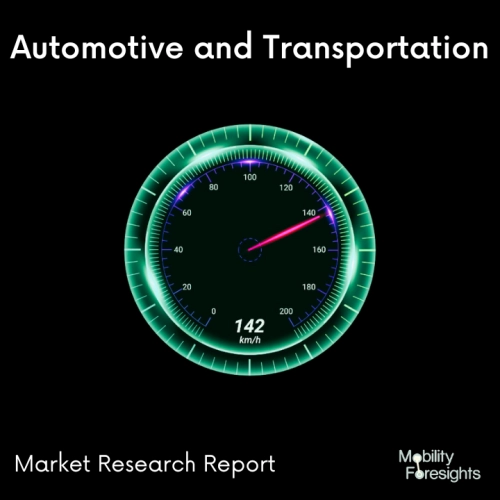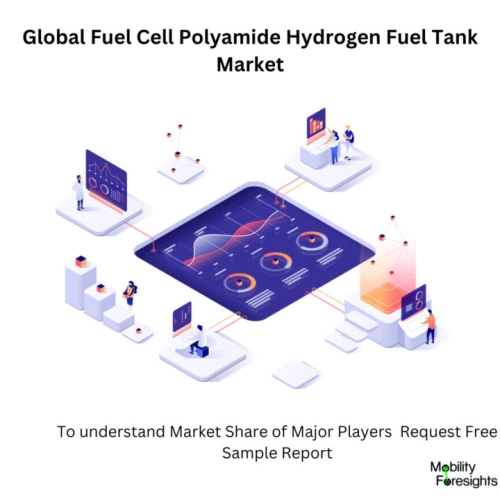
- Get in Touch with Us

Last Updated: Apr 25, 2025 | Study Period: 2023-2030
GLOBAL FUEL CELL POLYAMIDE HYDROGEN FUEL TANK MARKET
INTRODUCTION
A fuel cell generates electricity cleanly and effectively by utilising the chemical energy of hydrogen or other fuels. Electricity, water, and heat are the only byproducts if hydrogen is the fuel.
A fuel cell is made specifically for use in racing. Compared to a fuel tank, fuel cells are more impact-resistant. They can be created from high-strength plastic, aluminium, or steel. Additionally, they are "Universal" fits, thus a mounting place will need to be created.
Compressed hydrogen tanks are the most widely utilised type of hydrogen storage in fuel cell cars.Tanks for compressed hydrogen fuel are currently manufactured of carbon fibre composites or composites composed of carbon fibre and metal alloys.
A high-molecular weight polymer acts as a barrier to the passage of hydrogen gas along the tank's inner line. The tank is covered by the outer shell to increase its resistance to damage and collision.
GLOBAL FUEL CELL POLYAMIDE HYDROGEN FUEL TANK MARKET SIZE AND FORECAST

The Global Fuel Cell Polyamide hydrogen fuel tank market accounted for $XX Billion in 2022 and is anticipated to reach $XX Billion by 2030, registering a CAGR of XX% from 2023 to 2030.
RECENT DEVELOPMENTS
Creating inexpensive, lightweight hydrogen vehicle storage tanks It's critical to develop safe and reliable hydrogen fuel tanks as automakers strive to improve cutting-edge hydrogen vehicle technology.
Numerous tank manufacturing processes employ high-density polyethylene (HDPE), however this material is prone to blistering and needs thicker walls than polyamides (PA) to achieve permeation criteria. Standard PA6 materials exhibit great thermal resistance and are reasonably priced, however they frequently become brittle at temperatures below zero.
Manufacturers must choose a thermoplastic solution that successfully combines their design, performance, and cost requirements in order to outperform rival providers.In response to the quickly rising demand for environmentally friendly materials for automobiles and outdoor gear, DSM developed Akulon® Fuel Lock.
The cutting-edge PA6 is perfect for making type IV pressure vessels because it offers good mechanical strength, dimensional stability, and impact resistance over the course of part lives while being 70% lighter than steel equivalents. By offering a superior barrier that lessens penetration leakage of hydrogen from the pressure vessel, Akulon Fuel Lock tank liners improve vehicle safety and fuel efficiency.
COMPANY PROFILE
THIS REPORT WILL ANSWER FOLLOWING QUESTIONS
| Sl no | Topic |
| 1 | Market Segmentation |
| 2 | Scope of the report |
| 3 | Abbreviations |
| 4 | Research Methodology |
| 5 | Executive Summary |
| 6 | Introduction |
| 7 | Insights from Industry stakeholders |
| 8 | Cost breakdown of Product by sub-components and average profit margin |
| 9 | Disruptive innovation in the Industry |
| 10 | Technology trends in the Industry |
| 11 | Consumer trends in the industry |
| 12 | Recent Production Milestones |
| 13 | Component Manufacturing in US, EU and China |
| 14 | COVID-19 impact on overall market |
| 15 | COVID-19 impact on Production of components |
| 16 | COVID-19 impact on Point of sale |
| 17 | Market Segmentation, Dynamics and Forecast by Geography, 2023-2030 |
| 18 | Market Segmentation, Dynamics and Forecast by Product Type, 2023-2030 |
| 19 | Market Segmentation, Dynamics and Forecast by Application, 2023-2030 |
| 20 | Market Segmentation, Dynamics and Forecast by End use, 2023-2030 |
| 21 | Product installation rate by OEM, 2023 |
| 22 | Incline/Decline in Average B-2-B selling price in past 5 years |
| 23 | Competition from substitute products |
| 24 | Gross margin and average profitability of suppliers |
| 25 | New product development in past 12 months |
| 26 | M&A in past 12 months |
| 27 | Growth strategy of leading players |
| 28 | Market share of vendors, 2023 |
| 29 | Company Profiles |
| 30 | Unmet needs and opportunity for new suppliers |
| 31 | Conclusion |
| 32 | Appendix |